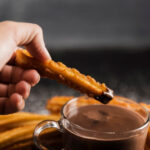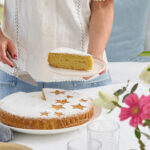When you’re a novice in the kitchen, baking can be tricky. But it’s not impossible to make something at home that looks and tastes like the work of a professional.
Whether you’re new to whisking or have butter sitting in the fridge for too long, these hacks will help you out. Every home cook needs to know how to do these tricks!
-
Read and Repeat the Recipe
To build the foundation of a house, it would be best to read a map first. And when preparing a dish, reading the recipe can’t substitute for enough repetitions.
Sometimes preparation can go smoothly, but false accusations are never too far away. You don’t want to be like Rachel and ruin your dessert with ground beef.
If you’re unfamiliar with what desserts are, it’s best to head over to the pages. It helps if you start from the beginning and look at the ingredients first. After that, follow these instructions. Make sure that you have all of them readily available before starting.
-
Know your necessary components and tools
If there is an ingredient that’s not available, make sure you use an appropriate supplement in its place. Make sure your utensils and cooking tools are clean and dry before beginning to cook. On any tools, there shouldn’t be dirt or moisture.
It’s important to remember that small mistakes can have significant consequences. It’s a good idea to be as careful as possible. It’s always helpful to know how much you’re adding. When measuring out items like sugar, salt or liquid, it’s best to use dry measuring cups and those made of glass or metal. And if you’re measuring liquids like water, milk or oil then use a liquid measuring cup.
A simple strategy for reducing waste is to put a dish beside you and empty everything you need to throw away into it. It can save time and effort, especially when you’re in a hurry.
-
Room Temperature
If the recipe states components should be kept at room temperature, do so. If the recipe mentions butter being at room temp, then use it. Frozen butter is not a good substitute as it curdles in hot liquids.
The ideal temperature to store eggs, milk, butter, and other dairy products is room temperature. When they’re kept at room temperature the components expand when they’re heated up in the oven. This ensures that the food is fluffy and soft. If you don’t store your ingredients at room temperature you might end up with a flat base or pile of dough.
There are backups if you forget to eliminate the objects in the criteria. For example, if you forgot to remove the melted butter but have been asked for it, grate it. It will quickly melt. A popular trick is to put eggs in a bowl of hot water if you’ve forgotten to take them out of the fridge. However, only use this shortcut if you are following directions from the recipe and not from your head.
Be sure to read the directions carefully and follow them according to what they say.
-
Learn the Differences
There are many different types of sugars and flours in our kitchens. You need to be aware of how they’re used to make the recipes work better.
There are many types of sugar for cooking and baking. Powdered sugar is great for frosting as it dissolves quickly in liquid, while pearl sugar doesn‘t melt in the heat. There’s a great range of flours to choose from and they’re used in different recipes. They vary in how much they’re needed, so it’s important to understand how to substitute different types of flour.
Baking can be done with all-purpose flour, whole wheat flour, gluten-free flour, or bread flour. For cakes and pastries, cake and pastry flours are available at the store. Cake flour has a lower protein content than other types of baking flours – this makes it tender when used for baking.
To ensure the best results, please make sure you are using the appropriate flour
-
Mixing well
Some recipes have instructions which ask you to mix the ingredients one by one while others have instructions which say to fold them in. So, it’s best to be safe than sorry and hold off on mixing the components all at once. The outcome won’t be a good one.Add the ingredients as directed in the recipe.
Be sure not to overmix the components of these recipes. If you do, then both the gluten and air content will be too large causing muffins to feel a lot rougher since every time you move it there will be small pieces falling out. Undermixing them will result in undesirable effects in terms of flavor.
When mixing the batter, keep an eye out for clumps. When the ingredients are dry, sift them out to avoid clumps and lumps in the end dish. It is simpler and helps you avoid stopping your preparations midway to do this task.
-
Using Oven
After you’ve mixed, measured, and primed the batter it’s time to put it in the oven to bake. Some people still open the oven frequently but this can cause a mess and ruin what you are cooking. This can not happen if you do not open the oven while your dish is cooking.
You should also make sure the oven is spotless. The state of your oven’s cleanliness can have a severe effect on its performance. Areas in the oven that are excessively hot or cold could be caused by dirty heating components or debris, like pie filling. So, knowing how to clean your oven is crucial.
If you’re using a convection oven, lower the temperature by 25 degrees Fahrenheit. It’s also a good idea to shorten the baking time-reduce it by 5 to 10 minutes for cookies, cakes, bread and brownies.
-
Checking Ready or not
How can you know if your cake or muffins are cooked and ready? There is, however, a simple workaround for this. Simply test it using a toothpick and if it comes out clean the bread is done; if not, you need more time to bake.
There is also a third option; you could remove your cake from the oven and set it aside to cool. Then press it down gently with a clean spoon – your cakes ready if it bounces back, but if not, you will need to cook them for longer.
To prevent cakes from drying out, wrap them in cling wrap. The freezer will retain their freshness for as long as you need, but if you’re looking for a shorter preservation time, store them in the fridge and make sure to keep a close eye on them.
-
Icing and Decoration
Decorating is the final but most appealing phase in cake-baking. When you first glance at a cake, it’s clear what draws the greatest attention. There are a few tools that might come in handy while decorating cakes like stamps, piping bags and picks or specialized cake decorations.
- Pastry bags with icing nozzles are awesome for decorating the finished product, but an understanding of how to use them is essential. It takes some time to learn, but it isn’t impossible.
- Bread knife: Bread knives are mostly used at the end to level or separate the layers. They can also be used to give the final product additional definition.
- Cake Scraper: You use the Cake Scraper for adding patterns on top of the cake – which you should practice first. They provide some experience points.
You might not get what you want from the first try, but this doesn’t mean that you should give up.
You may need some practice, but it’s never harmful to give things a try. At the very least, practicing takes up less of your personal time than other methods. When writing, take care with the details and follow instructions closely. Remember – nothing feels worse than giving up!
Author Bio:
Hi, I’m Rana and I blog at ranasrecipe.com. My passion for food began very early in my life. And after managing a cafe, a granola business and helping other food businesses scale up, I found my true calling in creating wonderful recipes so that everyone can enjoy cooking as much as I do! Don’t forget to follow me on my social channels- instagram and pinterest.

 Why Kids Love Eating at BBQ Restaurants Near Me More Than Chains
Why Kids Love Eating at BBQ Restaurants Near Me More Than Chains  Experience Italian Fine Dining Infused With Creativity, Tradition, And Seasonal Freshness
Experience Italian Fine Dining Infused With Creativity, Tradition, And Seasonal Freshness  Do regional ingredients truly make a difference in authentic cuisine?
Do regional ingredients truly make a difference in authentic cuisine?  Top 5 Healthy Ingredients to Find in Your Meal Prep Service
Top 5 Healthy Ingredients to Find in Your Meal Prep Service  Elegant Wine and Champagne Gift Baskets for Life’s Milestone Moments
Elegant Wine and Champagne Gift Baskets for Life’s Milestone Moments  The Sweet Revelation: Discovering the Delicate Treasure of Northern Waters
The Sweet Revelation: Discovering the Delicate Treasure of Northern Waters  How Cold Rooms Improve Food Storage and Preservation in Restaurants
How Cold Rooms Improve Food Storage and Preservation in Restaurants  Creative Ways to Enjoy and Buy Chocolate Dipped Pretzel Rod Online
Creative Ways to Enjoy and Buy Chocolate Dipped Pretzel Rod Online  Gluten Free Baking to Bring in the New Year
Gluten Free Baking to Bring in the New Year 